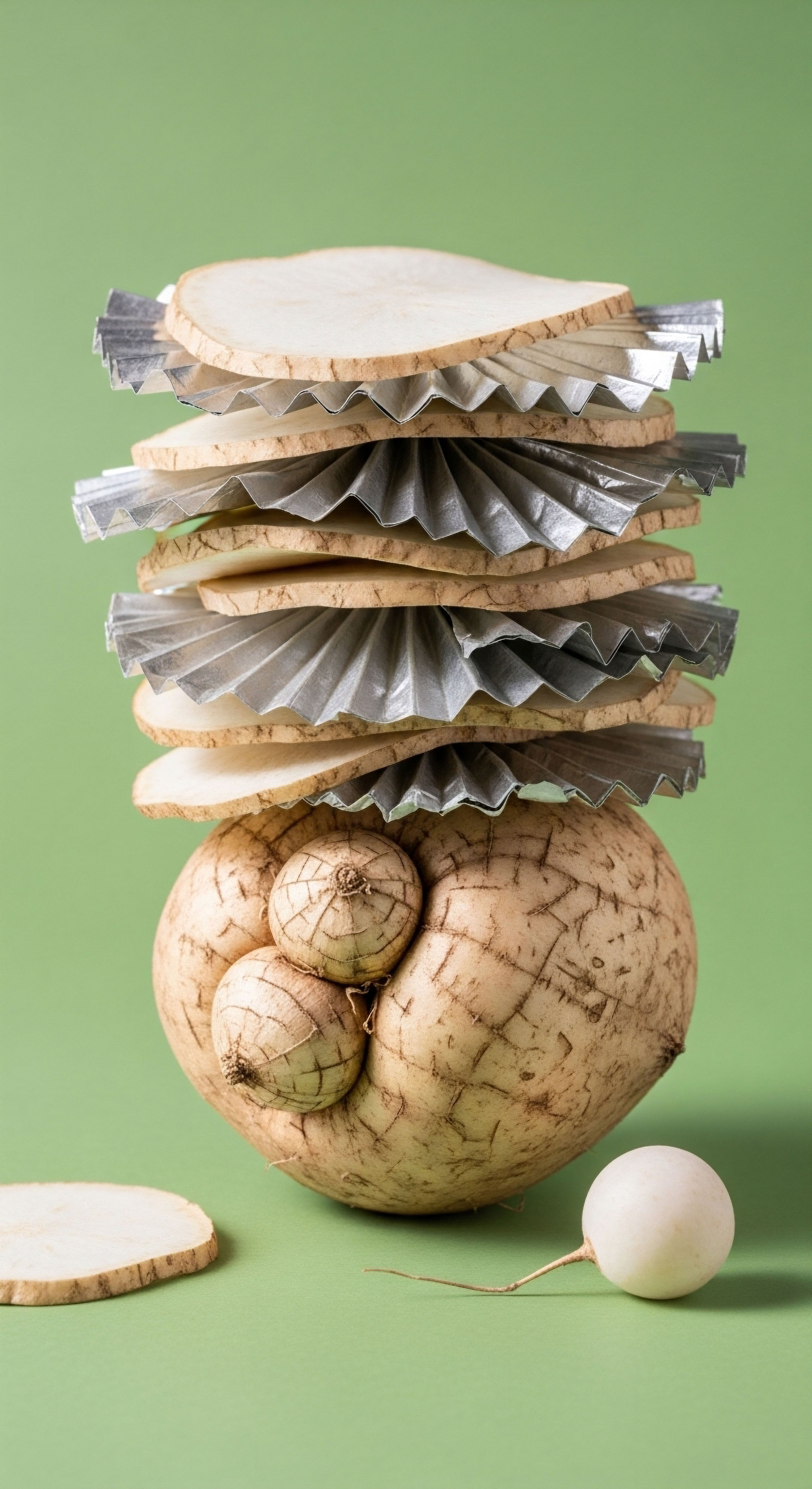

Fundamentals
The question of whether lifestyle choices can stand in for hormonal therapy in preserving bone strength is a deeply personal one. It touches upon the desire to maintain autonomy over our bodies as they change. You feel your body shifting, and the architectural framework that has supported you, your skeleton, becomes a central concern.
This is a valid and intelligent line of inquiry. Your bones are not static structures; they are dynamic, living tissues in a constant state of renewal, a process orchestrated by a complex interplay of hormonal signals and physical demands. Understanding this biological conversation is the first step toward consciously participating in it.
At the heart of this process is a cellular duo ∞ osteoclasts, which break down old bone tissue, and osteoblasts, which build new bone. For much of your life, these two cell types work in a balanced rhythm. During the menopausal transition, however, the decline in estrogen disrupts this equilibrium.
Estrogen acts as a natural brake on osteoclast activity. When estrogen levels fall, this brake is released, and bone resorption begins to outpace bone formation. This is the biological reality behind the increased risk of osteoporosis, a condition characterized by low bone mineral density and a fragile skeletal structure.
Your skeletal system is a living, responsive tissue that remodels itself based on hormonal cues and mechanical stress.
This is where lifestyle interventions like diet and exercise enter the conversation as powerful modulators. Your diet provides the raw materials for bone construction. Calcium is the primary mineral component of bone, and Vitamin D is essential for its absorption. A consistent supply of these nutrients is foundational to skeletal health.
Exercise, particularly weight-bearing and resistance training, provides the necessary stimulus for bone formation. When your muscles pull on your bones during these activities, it sends a powerful signal to the osteoblasts to build more bone tissue, making the structure denser and stronger.
Think of it as a direct communication to your skeletal framework, telling it that it needs to be robust to meet the demands being placed upon it. These lifestyle factors are the cornerstones of bone health, providing the fundamental support system for your skeleton.


Intermediate
To truly grasp the interplay between lifestyle and hormonal support, we must examine the specific mechanisms through which each contributes to skeletal integrity. Lifestyle choices and hormonal therapies are not opposing teams; they are distinct players that can work on the same field, often with synergistic effects.
Their actions, while complementary, target different aspects of the bone remodeling cycle. A well-designed lifestyle protocol is pro-osteoblastic, meaning it promotes the building of new bone. Hormonal optimization protocols, specifically those involving estrogen, are primarily anti-resorptive, meaning they prevent the breakdown of existing bone.

The Mechanics of Intervention
Let’s refine our understanding of how these interventions function at a biological level. Menopause Hormone Therapy (MHT), particularly combined estrogen and progestogen therapy for women with a uterus, directly addresses the hormonal deficit that accelerates bone loss. Estrogen works by inhibiting the activity and lifespan of osteoclasts, the cells responsible for bone resorption.
By re-establishing this braking mechanism, MHT effectively preserves bone mineral density (BMD) that would otherwise be lost during the menopausal transition. Studies suggest that lower doses administered over longer durations are highly effective in this preservation role.
Exercise, on the other hand, operates through a process called mechanotransduction. The physical forces generated by specific types of movement are translated into biochemical signals that stimulate osteoblasts to deposit new bone matrix. The most effective forms of exercise for this purpose include:
- Resistance Training ∞ Lifting weights or using resistance bands creates muscular contractions that place direct stress on the bones, signaling the need for fortification. A regimen of moderate-to-high intensity training performed two to three times per week is considered optimal.
- Impact Activities ∞ Weight-bearing exercises like running, jumping, and brisk walking generate ground reaction forces that travel through the skeleton. Engaging in these activities at least three days per week provides a potent stimulus for bone formation.

Comparing the Effects on Bone Density
Clinical evidence consistently shows that while both MHT and exercise are independently effective, their combination yields a superior outcome for enhancing bone mineral density. Women who combine hormone therapy with a structured exercise program see more significant improvements in BMD at critical sites like the lumbar spine and femoral neck compared to those who use only one intervention. This suggests a complementary relationship where MHT preserves the bone matrix, and exercise builds upon that preserved foundation.
| Intervention Strategy | Primary Mechanism of Action | Observed Effect on BMD |
|---|---|---|
| Exercise Alone (Resistance & Impact) | Promotes bone formation (pro-osteoblastic) via mechanical loading. | Increases or maintains BMD, particularly with sufficient calcium intake. |
| Hormone Therapy Alone (MHT) | Reduces bone resorption (anti-osteoclastic) by inhibiting osteoclasts. | Effectively preserves BMD and prevents accelerated menopausal bone loss. |
| Combined Exercise and Hormone Therapy | Synergistic effect of reducing resorption and promoting formation. | Enhances BMD more significantly than either intervention alone. |


Academic
A sophisticated analysis of bone physiology reveals that the question is not one of replacement, but of synergy. Lifestyle interventions and endocrine system support operate on distinct yet interconnected pathways that regulate skeletal homeostasis.
The interaction between mechanical loading from exercise and the hormonal environment created by therapy is a key area of study, demonstrating how systemic hormonal signals can modulate the local cellular response to physical stress. The combined approach appears to create an environment that is optimally primed for bone accretion.

Estrogen’s Role in Mechanosensitivity
The core of the synergistic effect lies in estrogen’s influence on the mechanosensitivity of bone cells. Estrogen receptors are present on both osteoblasts and osteocytes, the cells that orchestrate the remodeling process. Research indicates that estrogen enhances the sensitivity of these cells to mechanical stimuli.
In a state of estrogen sufficiency, the mechanical strains produced by exercise are more effectively translated into the anabolic signals that drive bone formation. Therefore, when a woman undergoes MHT, she is not only slowing bone resorption but is also potentially making her skeleton more responsive to the positive effects of her exercise regimen. The presence of estrogen amplifies the bone-building signal generated by physical activity.
Hormone therapy may amplify the bone-building signals generated by targeted physical exercise.

What Is the Quantitative Evidence for Synergy?
Clinical trials provide quantitative data supporting this synergistic model. A study involving 320 postmenopausal women demonstrated that those who combined hormone replacement therapy with a program of aerobic, weight-bearing, and weight-lifting exercises showed BMD increases of approximately 1-2% at the femoral neck, trochanter, and lumbar spine over 12 months.
In contrast, women who exercised without HRT also saw benefits, particularly a 1% increase in trochanteric BMD, but the response was significant at more skeletal sites in the combined therapy group. This highlights that while exercise is a powerful anabolic stimulus in its own right, its effects are potentiated by an optimized hormonal background. The data points to a model where MHT creates a permissive environment that allows the mechanical loading from exercise to exert its maximal osteogenic effect.
| Skeletal Site | HRT + Exercise (% Change) | Exercise Only (% Change) | HRT Only (% Change) |
|---|---|---|---|
| Femoral Neck | ~1-2% Increase | Variable/Maintained | Negligible Change |
| Trochanter | ~1-2% Increase | ~1.0% Increase | Negligible Change |
| Lumbar Spine | ~1-2% Increase | Variable/Maintained | Maintained/Slight Increase |

Can Lifestyle Completely Mitigate Menopausal Bone Loss?
While a highly disciplined regimen of targeted exercise and optimal nutrition is foundational and can significantly improve bone health, it does not fully replicate the systemic, anti-resorptive action of estrogen. Estrogen’s role in suppressing osteoclast activity is a unique and potent mechanism. Exercise primarily stimulates osteoblasts.
Therefore, in the face of the rapid, hormonally-driven increase in bone resorption that occurs during menopause, relying solely on exercise means one is attempting to build new bone at a faster rate than the accelerated breakdown. For many, this is a biological challenge. The most effective clinical strategy, where appropriate and safe for the individual, involves using MHT to control the excessive resorption while simultaneously using exercise to actively build new, dense bone tissue.

References
- Stubbs, C. et al. “Impact of menopause hormone therapy, exercise, and their combination on bone mineral density and mental wellbeing in menopausal women ∞ a scoping review.” Frontiers in Public Health, vol. 13, 2025, p. 1542746.
- Kohrt, W.M. et al. “Effects of exercise on bone mineral density in calcium-replete postmenopausal women with and without hormone replacement therapy.” Osteoporosis International, vol. 14, no. 8, 2003, pp. 637-43.

Reflection
You have now seen the biological blueprints, the cellular conversations, and the clinical data. The evidence points toward a powerful partnership between lifestyle and hormonal support. Your body is a responsive, intelligent system. The feeling of vulnerability that can accompany hormonal change can be met with the profound empowerment that comes from understanding these internal mechanisms.
The path forward is one of informed action. This knowledge is your starting point, a map to help you ask deeper questions and engage with your own health journey on a more sophisticated level. The ultimate protocol is the one that is calibrated to your unique biology, your personal history, and your future aspirations for vitality.



